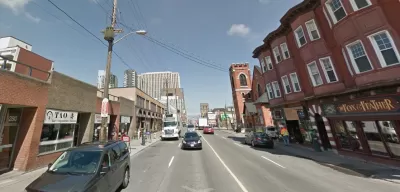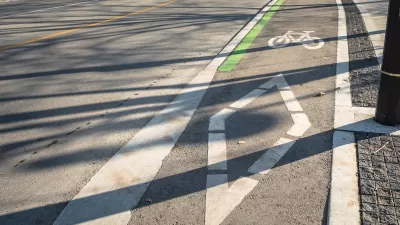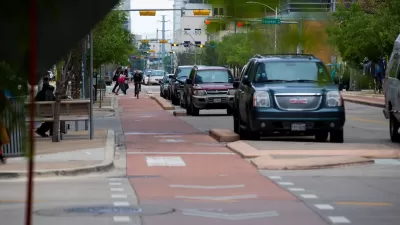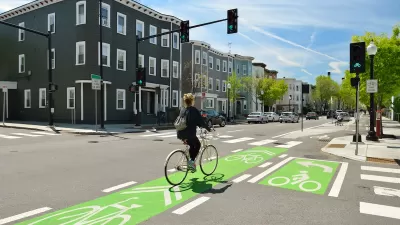The city of Ottawa's plan to make improvements to Elgin Street has elicited conflicting opinions between businesses, residents, and commuters on what should be prioritized in order to make a better street.

With large portions being no wider than four lanes (with two of those lanes being street parking) and no room to grow, Elgin Street in downtown Ottawa, Canada finds itself in a battle between the businesses who want to keep their street parking and everyone else who want a bike and pedestrian friendly street. David Reevely of the Ottawa Citizenreports that the consensus opinion of locals is a desire to see wider sidewalks, bike lanes, more street trees, and patios. Businesses on the street disagree, putting their number one priority as the street parking that lines both sides of the narrow roadway.
Reevely writes that a 1989 study by consultants of the area's parking situation found that there was an abundance of daytime parking, but evening parking, when patrons were going to restaurants and businesses, was in short supply.
The consultants kicked around the ideas of banning new restaurants and bars on Elgin because they bring people in at night beyond the area’s parking capacity, fiddling with a handful of no-parking zones to add some spots here and there, and — the big one — tearing up Jack Purcell Park for a new 150-space city garage.
The garage was probably best, the consultants concluded, even though it would cost millions and need subsidies because people will pay for parking when they’re going to work but resist it when they’re going out to enjoy themselves. I’ll say that again. People want parking but not enough to pay what it costs to provide, even when it’s scarce.
The city of Ottawa's project web site notes the functional design study for the street, following the review and evaluation of all options, is scheduled to conclude early next year.
FULL STORY: The battle for Elgin Street is heating up

Study: Maui’s Plan to Convert Vacation Rentals to Long-Term Housing Could Cause Nearly $1 Billion Economic Loss
The plan would reduce visitor accommodation by 25,% resulting in 1,900 jobs lost.

North Texas Transit Leaders Tout Benefits of TOD for Growing Region
At a summit focused on transit-oriented development, policymakers discussed how North Texas’ expanded light rail system can serve as a tool for economic growth.

Why Should We Subsidize Public Transportation?
Many public transit agencies face financial stress due to rising costs, declining fare revenue, and declining subsidies. Transit advocates must provide a strong business case for increasing public transit funding.

How Community Science Connects People, Parks, and Biodiversity
Community science engages people of all backgrounds in documenting local biodiversity, strengthening connections to nature, and contributing to global efforts like the City Nature Challenge to build a more inclusive and resilient future.

Alabama: Trump Terminates Settlements for Black Communities Harmed By Raw Sewage
Trump deemed the landmark civil rights agreement “illegal DEI and environmental justice policy.”

Dear Tesla Driver: “It’s not You, It’s Him.”
Amidst a booming bumper sticker industry, one writer offers solace to those asking, “Does this car make me look fascist?”
Urban Design for Planners 1: Software Tools
This six-course series explores essential urban design concepts using open source software and equips planners with the tools they need to participate fully in the urban design process.
Planning for Universal Design
Learn the tools for implementing Universal Design in planning regulations.
City of Santa Clarita
Ascent Environmental
Institute for Housing and Urban Development Studies (IHS)
City of Grandview
Harvard GSD Executive Education
Toledo-Lucas County Plan Commissions
Salt Lake City
NYU Wagner Graduate School of Public Service





























